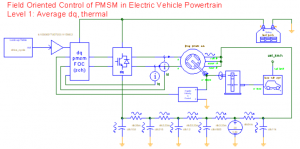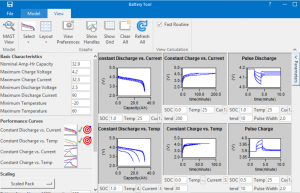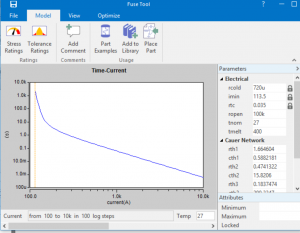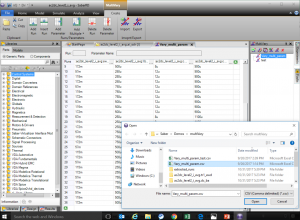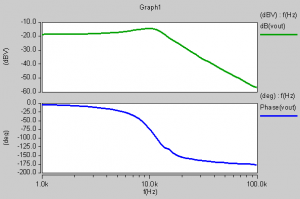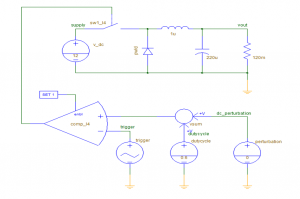Here is a description of the new features available in Saber software :
- The Graphical User Interface has been improved and now it is in 64-bits: Thanks to that, SABER can read large waveforms > 2GB.
New experiments to guide using the example have been created.
For example : The level-1 Powertrain example has a “performance with aging” experiment available to sweep the battery pack temperature and age profile against the rest of the system. This provides a what-if investigation of battery impact upon system performance versus nominal, but also high to low extremes of both age and temperature.
So this example has been updated to reflect realistic battery pack using SaberRD’s new Battery Tool.
– Characterization based on charge & discharge measurements
– Includes static thermal and aging behaviors
– Supports different battery topologies:
– Single Cell
– Scaled Pack
– Distributed Pack
Full support of Robust Design methodology through statistical variability.
Improved fit and dynamic behavior; more consistent with fuse physics:
– Five RC stages instead of two in old tool
– Change in the resistance happens through the variation of the fuse inner temperature
New user interface that adopts the look & feel of the MOSFET, IGBT, & Battery tools.
Full support of Robust Design methodology through statistical variability.
- MultiVary:
More flexible than a nested Vary:
– Allows multiple parameters to be varied in each loop.
– Allows a different set of parameters to be varied in each loop.
Use from Quicksim bar or as part of an Experiment
Possibility to Import/Export from Excel (.csv).
- Improved Distributed Iterative Analysis (DIA):
– 2017.12 lowers the threshold for where you should see benefit to MultiCore parallelization on iterative analyses.
– Previously, the benefit was best realized on more complex designs.
Works for all iterative analyses, Leverages SABER_RUNTIME or Saber licenses.
Check the Design Example : 3-Phase AC to DC Converter (Level 1) in SABER.

- DIA (Distributed Iterative Analysis) for PAC (Periodic AC analysis) is available now:
– PAC analysis calculates the transfer functions and Bode plots of non-linear periodic circuits
– Phase and amplitude are extracted using a Fourier analysis of the time-domain results
- Download and install the latest version of Synopsys Common Licensing (SCL) for your license server from SolvNet (http://solvnet.synopsys.com) in order to use Saber 2017.12 products
Please don’t hesitate to contact us if you need additional information.
Thanks to all SABER community: You help guide this evolution, please continue sending your feedback and suggestions via SolvNet Cases.



